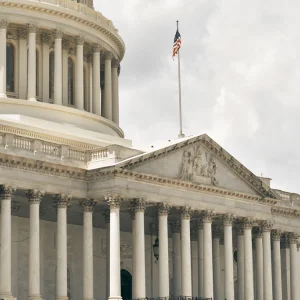We play for October。10月、アメリカの野球場は熱狂に包まれる。米国メジャーリーグ(MLB)の頂点を決するポストシーズンの季節だ。日本でもテレビやYouTubeを通じて、日の丸を背負った侍たちの活躍を目にすることができる。しかし、MLB選手たちがグラウンドの外でもう一つの戦いを繰り広げていることをご存知だろうか。税務という名の闘いである。高い年俸を得ているメジャーリーガーたちは、年間を通じて複数の州で試合を行っている。そのため各州において多額の所得税を払っているのだ。その課税根拠となるのが、いわゆる 「Jock Tax(ジョック税)」 である。今回はその仕組みを簡単に紹介したい。
A. 米国各州の源泉所得
大谷翔平選手をはじめとするメジャーリーガーの場合、所得の源泉地(州)は基本「試合のあった州」となる。それが米国各州のネクサス(つながりと確定申告義務)の考え方である。ホームとアウェイを繰り返すことで、所得のネクサス源泉地は十数州に及ぶことが多い。例えば大谷選手の場合、2025年レギュラーシーズン計162試合のうち、本拠地であるドジャースタジアムでの試合は81試合、アウェイは81試合であった。このアウェイ試合のうち37試合は、カリフォルニア州以外の13州プラス日本(2025年東京シリーズの2試合)で行われた。つまり、一般的な会社員のように毎日同じオフィスで働くのとは違い、シーズンの大部分は他州への「出張」扱いであり、そこで所得が発生することになる。
B. Jock Taxとは
このように複数州で試合を行うスポーツ選手に課される所得税が「Jock Tax(ジョック税)」である。「Jock」とは男性アスリートを指す俗語だが、この税はMLBだけでなく、NBA、NFLなどのプロ選手が本拠地以外の州で活動する際に課される州所得税を指す。さらに、対象は選手だけではなく、チームスタッフや巡業するバンドや歌手といったエンターテイナーにも及ぶのである。
算定方法は以下の通りである。
年俸 × (州内でのDuty Days ÷ 全Duty Days) = 当該州で得た所得
※Duty Daysとは、試合日だけでなく練習やミーティングなどに費やした日数も含まれる。
米国50州およびワシントンD.C.の多くがJock Taxを導入しているが、州所得税そのものが存在しないテキサス州、フロリダ州、ワシントン州、アラスカ州、ネバダ州、サウスダコタ州、ワイオミング州では課税されない。一方で、カリフォルニア州(最高税率13.3%)やニューヨーク州(同10.9%、いずれも2024年税率)は全米でも高水準の税率を課している。また、米国では市レベルでの課税はまれだが、ニューヨーク市、デンバー市、デトロイト市など一部都市では市所得税があり、居住者でなくても課税される場合がある。
C. Jock Taxの課題
カリフォルニア州にはMLB 5球団、NFL 3球団、NBA 4球団が存在し、当該州にとってJock Taxは重要な財源である。しかし選手にとっては申告が複雑になり、大きな負担となっている。さらに、課税対象は高額報酬のスター選手だけではなく、チームに帯同するトレーナーやスタッフにも及ぶため、所得に比して過大な負担となる場合があると指摘されている。また、同じ年俸でも、税率の高いカリフォルニア州(13.3%)と、個人所得税のないフロリダ州やテキサス州とでは手取りが大きく変わる。選手がチームを選ぶ際、税務上の理由が最優先されることは少ないが、契約交渉において税金対策を考慮する「賢い」選手も出てくるだろう。たとえば、テキサス州に本拠地を置くTexas RangersやHouston Astrosは、税務面で見ると、カリフォルニア州のLA DodgersやSan Diego Padresよりも、明らかな節税効果を享受できることが理解できるようになる。
D. まとめ
10月、MLBはいよいよ頂上決戦ワールドシリーズへと突入する。その華やかな舞台の裏では、州ごとの移動、関係者の源泉所得計算、そして煩雑な確定申告が選手やスタッフを待ち受けている。ベンチ入の補欠メジャーリーガーや、絶不調に陥っているプレイヤーたちは、マスコミの脚光からは逃れても、納税義務から逃れることはできないのである。「We play for October」というスローガンの背景には、こうした厳しい現実もある。税務という新たな視点からMLBを眺めてみれば、MLB観戦が一層奥深いものになり、メジャーリーガーに対する畏敬の念も芽生えるだろう。
<本ニュースレターは、米国における一般的な動向や情報をご案内する目的で配信している。具体的なご質問やアドバイス等は専門家に直接ご相談下さい。>
What is the Unique Taxation of Major League Baseball Players?
“We play for October.” Every October, this shout echoes accross baseball stadiums in America. It’s postseason, the final stretch that determines the pinnacle of this year’s Major League Baseball (MLB) . Fans in Japan can also watch their favorite Samurai Warriors, representing the “Hinomaru”, on television and on YouTube. But did you know that MLB players face another kind of battle off the field? It’s the battle of “taxes”. All Major Leaguers, who earn substantial income, play games across multiple states throughout the year. Because of this, they end up owing state income taxes in many States. This is the so-called “Jock Tax.” This article will briefly explain how this works.
A. Income source from U.S. States
For Major Leaguers, such as famous baseball star Shohei Ohtani, the source of income is essentially the state in which the game is played. This reflects each state’s concept of “Nexus”, the connection that creates a tax-filing obligation. Because teams alternate between home and away games, a player’s income nexus can extend to more than a dozen states. For example, during the 2025 162-game regular season, Shohei Ohtani played 81 games at Dodger Stadium (his home field) and 81 games away. Of those away-games, 37 were held in 13 states outside California, plus two games in Japan (2025 Tokyo Series). Unlike an ordinary office worker who reports to the same workplace every day, a Major Leaguer spends a significant portion of the season “on the road,” generating taxable income in other states.
B. What Is the Jock Tax?
The Jock Tax is an income tax imposed on athletes who perform in multiple states. “Jock” is slang for an athlete, but this tax applies not only to MLB players, but it also affects professionals in leagues such as the NBA and NFL who compete outside their home states. Moreover, the rule extends beyond athletes to include team staff, trainers, and even touring entertainers such as musicians and performers.
The calculation is as follows:
Annual Salary × (Duty Days in State ÷ Total Duty Days) = Income Earned in That State
“Duty Days” include not only game days but also practices, meetings, and other work-related days.
Most of the 50 states and Washington, D.C., levy this tax. However, states without a personal income tax—Texas, Florida, Washington, Alaska, Nevada, South Dakota, and Wyoming, do not. By contrast, California (maximum rate 13.3%) and New York (maximum rate 10.9%, as of 2024) impose some of the highest rates in the nation. City-level income taxes are rare, but certain cities—such as New York City, Denver, and Detroit—do tax non-residents who earn income there.
C. Challenges of the Jock Tax
California hosts five MLB teams, three NFL teams, and four NBA teams, making the Jock Tax an important source of state revenue. For players, however, the resulting tax filings are complex and burdensome. Because the tax applies not only to high-earning stars but also to team trainers and staff, it can impose a disproportionately heavy burden on lower-income personnel. Furthermore, even with identical salaries, take-home pay varies dramatically between high-tax states like California (13.3%) and tax-free states like Florida or Texas. Although taxes are rarely the top priority when players choose teams, some savvy athletes consider the tax implications during contract negotiations. For instance, the Texas-based Texas Rangers and Houston Astros enjoy clear tax advantages compared to the California-based LA Dodgers and SD Padres.
D. Summary
As MLB enters its climactic World Series in October, the spotlight shines on the players chasing a championship. Yet behind the glamour lies a hidden challenge: multi-state travel, complex income allocation, and intricate tax filings. Even bench players who escape the media spotlight cannot escape the taxation. Behind the proud slogan “We play for October” lies a financial reality that few fans see. Viewing MLB through the lens of taxation offers a deeper appreciation for the game, and for the players who navigate both fastballs and filing deadlines.
<This newsletter is distributed with the aim of introducing general trends and information in the United States. For specific questions or advice, please consult an expert directly.>









